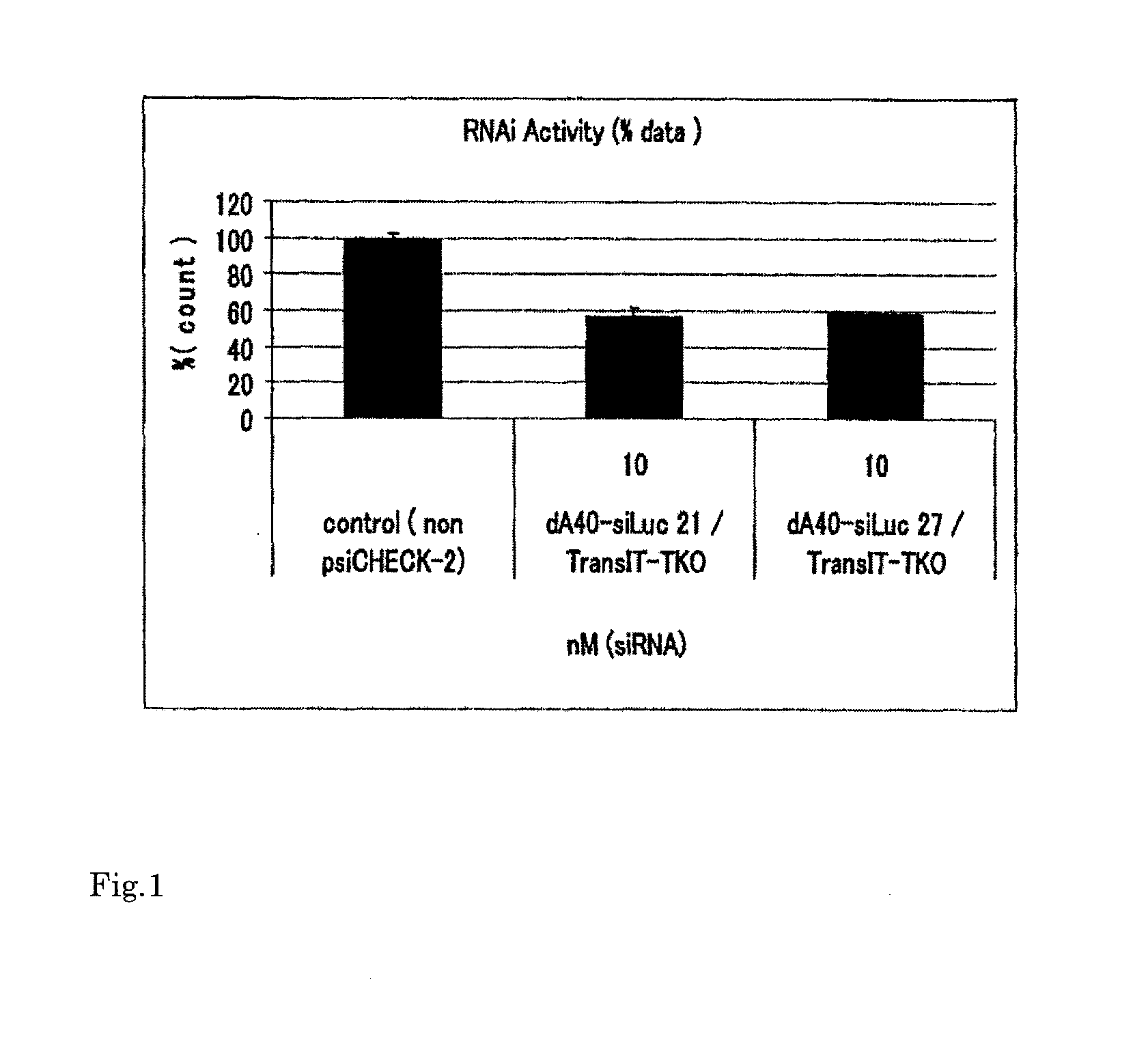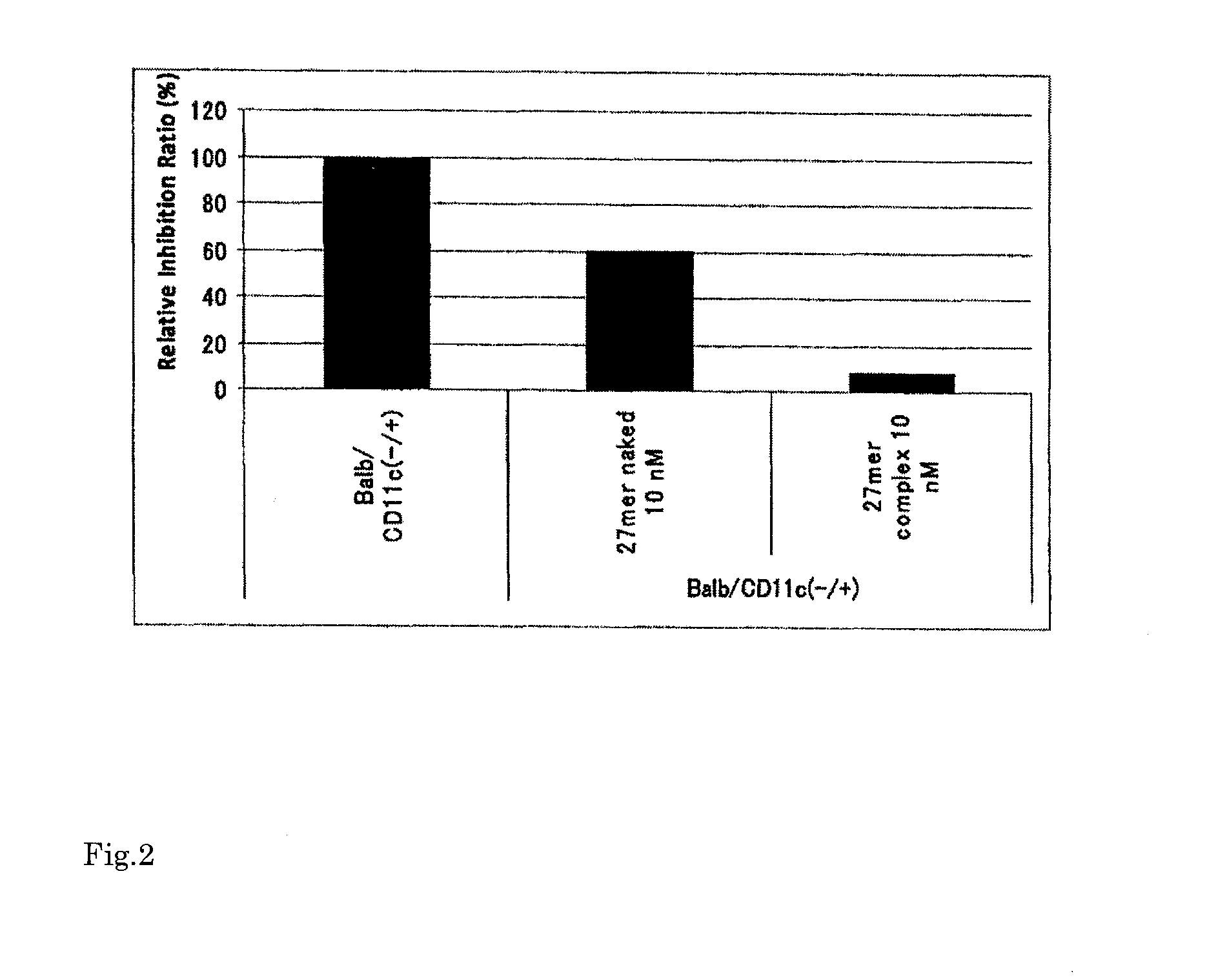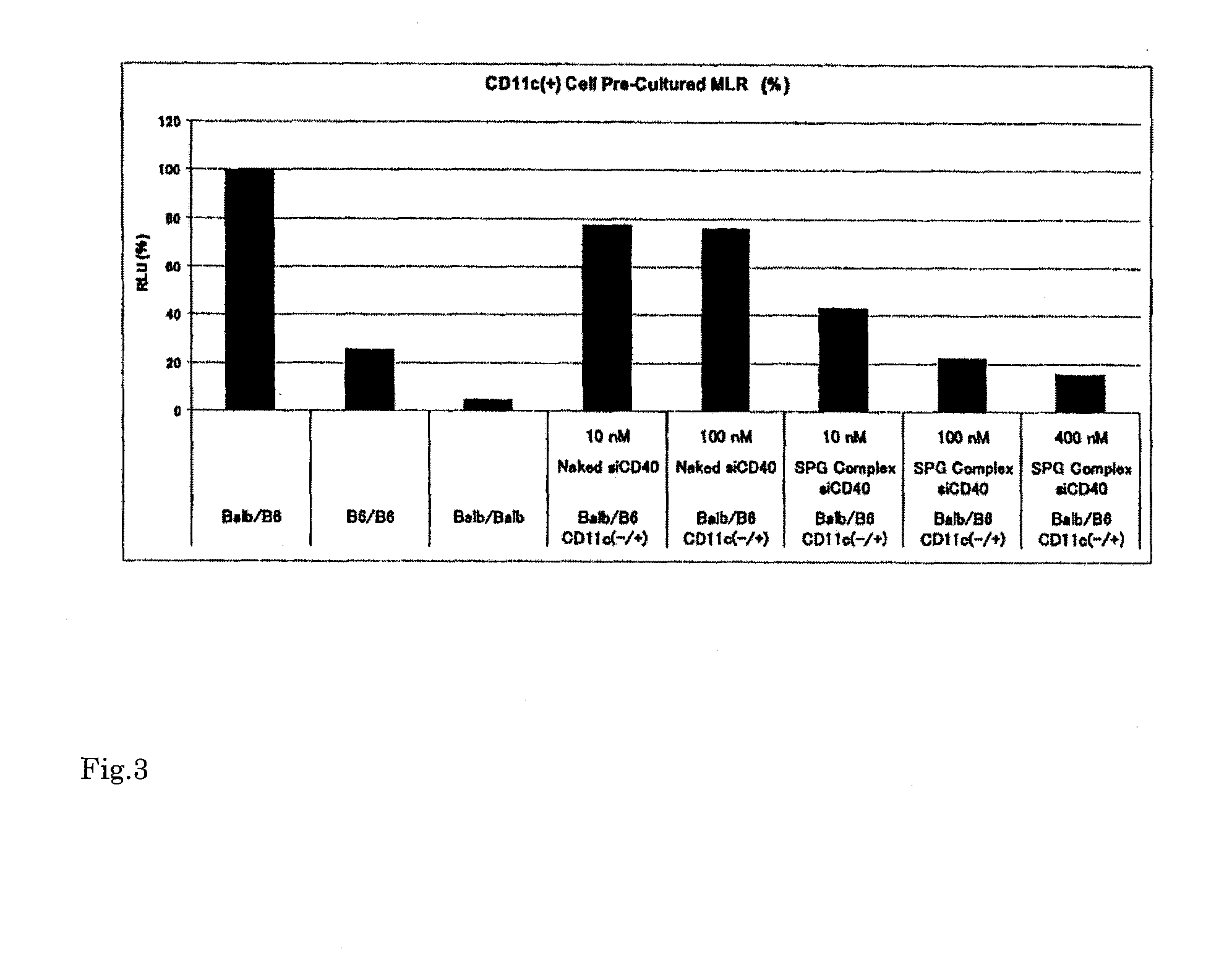Immune tolerance inducer
a technology of immune tolerance and inducer, which is applied in the direction of immunological disorders, antibody medical ingredients, drug compositions, etc., can solve the problems of insufficient effect, inability to form a risc complex, and inability to obtain sufficient effect,
- Summary
- Abstract
- Description
- Claims
- Application Information
AI Technical Summary
Benefits of technology
Problems solved by technology
Method used
Image
Examples
example 1
Formation of Nucleic Acid-Polysaccharide Complex of SPG and siRNA
[0072]The nucleic acid-polysaccharide complexes used in the following examples were formed as follows. SPG with a molecular weight of about 150000 was prepared so as to have a final concentration of 15 mg / ml in a 0.25 N aqueous sodium hydroxide solution, then stirred for 1 hour, and left to stand at 4° C. for 1 day for modification. A solution of an siRNA to which S-modified poly(dA) dissolved in 330 mM first sodium phosphate had been added was added to this modified SPG solution, and the mixture was neutralized and left to stand at 4° C. for no less than 24 hours. At this time, the mixture was prepared so as to have 0.27 mol of SPG per mol of siRNA. Note that, in the S-modified poly(dA)-added siRNA, 40 phosphorothioated deoxyadenines were linked with the 5′ end of the sense strand of the siRNA by phosphoester links. In the following examples, the S-modified poly(dA) may be referred to as dA40(s). The extent of S modif...
example 2
Stability of Nucleic Acid-Polysaccharide Complex of S-Modified Poly(dA)-Added siRNA and SPG in Cell Culture Medium
[0073]Preparation was carried out so as to satisfy the conditions shown in Table 1 by adding a sample to a phosphate buffer (PBS) or a cell culture medium (10% FBS+RPMI) (FBS: Biological Industries Cat #04-001-1A, RPMI: Wako Pure Chemical Industries, Ltd., Cat #189-02025)). The sample was incubated at 37° C. for 4 hours or 24 hours, then subjected to electrophoresis under 100 V and 60 min conditions using 12.5% polyacrylamide gel (Tris-borate-EDTA (TBE)), and stained with SYBR Gold (Lifetechnologies Japan).
[0074]In Table 1, in dA40(s)-siLuc(21 nt), 40 mer phosphorothioated polydeoxyadenine was added to the 5′ end of the sense strand of 21 mer siRNA (SEQ ID NO. 1) directed to luciferase. In dA40(s)-siLuc(27 nt), 40 mer phosphorothioated polydeoxyadenine was added to the 5′ end of the sense strand of 27 mer siRNA (SEQ ID NO. 3) directed to luciferase.
TABLE 1LaneSampleIncub...
example 3
Dicer Sensitivity of Nucleic Acid-Polysaccharide Complex
[0076](3-1) Dicer Sensitivity of Nucleic Acid-Polysaccharide Complex with Non-5-Modified dA Tail
[0077]In this example, a recombinant human dicer enzyme kit (manufactured by Genlantis Inc.: Cat #T510002) was used. Also, premixes having the following components (A to E) were prepared.
[0078]A. Nucleic acid sample: 2.5 μl (25 ng)
[0079]B. 10 mM ATP: 1 μl
[0080]C. 50 mM MgCl2: 0.5 μl
[0081]D. Dicer reaction buffer: 4 μl
[0082]E. Recombinant Dicer enzyme (1 unit): 2 μl
[0083]Samples B to D or B to E were mixed in a PCR tube, and then nucleic acid sample A was added. Then, nuclease-free distilled water was added such that the final volume was 10 μl. Then, incubation was carried out at 37° C. for 15 hours. After incubation, a stop solution was added to stop the reaction. Electrophoresis was carried out at 150 V for 80 min using 15% polyacrylamide gel (Tris-borate-EDTA (TBE)), and the gel was stained with SYBR (r) Gold (Lifetechnologies Japa...
PUM
| Property | Measurement | Unit |
|---|---|---|
| volume | aaaaa | aaaaa |
| volume | aaaaa | aaaaa |
| volume | aaaaa | aaaaa |
Abstract
Description
Claims
Application Information
 Login to View More
Login to View More - R&D
- Intellectual Property
- Life Sciences
- Materials
- Tech Scout
- Unparalleled Data Quality
- Higher Quality Content
- 60% Fewer Hallucinations
Browse by: Latest US Patents, China's latest patents, Technical Efficacy Thesaurus, Application Domain, Technology Topic, Popular Technical Reports.
© 2025 PatSnap. All rights reserved.Legal|Privacy policy|Modern Slavery Act Transparency Statement|Sitemap|About US| Contact US: help@patsnap.com



